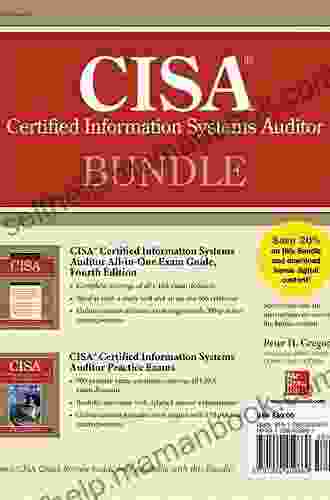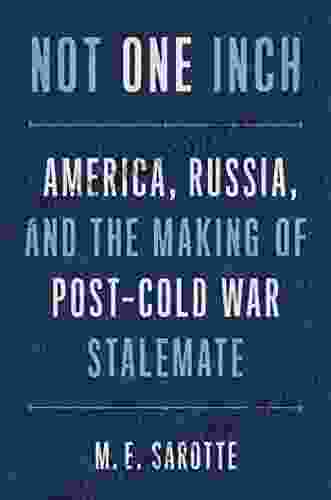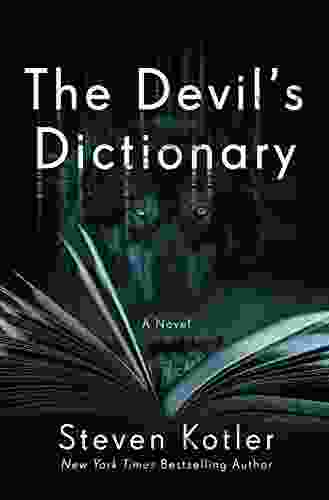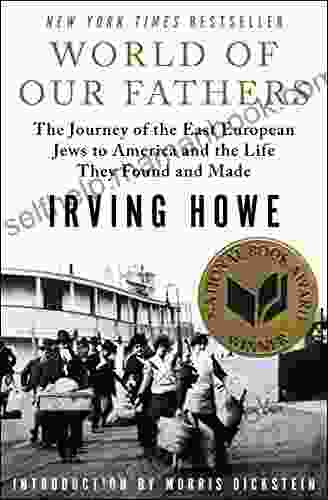Not One Inch: America Russia And The Making Of Post Cold War Stalemate (The Henry L Stimson Lectures Series)

The end of the Cold War marked a profound shift in global politics. The bipolar world order that had dominated the post-World War II era gave way to a more complex and fluid geopolitical landscape. In the aftermath of the Soviet Union's collapse, the United States emerged as the world's sole superpower, while Russia struggled to find its place in the new world order.
The transition from Cold War to post-Cold War was not without its challenges. The collapse of the Soviet Union created a power vacuum that led to regional instability and conflict. The United States and Russia found themselves at odds over a range of issues, including the future of NATO, the arms trade, and human rights.
In 2015, the Henry Stimson Center, a nonpartisan think tank based in Washington, D.C., published a report titled "America, Russia, and the Making of the Post-Cold War Stalemate." The report examined the evolution of U.S.-Russia relations since the end of the Cold War and identified the factors that have contributed to the current stalemate.
4.7 out of 5
| Language | : | English |
| File size | : | 9023 KB |
| Text-to-Speech | : | Enabled |
| Screen Reader | : | Supported |
| Enhanced typesetting | : | Enabled |
| X-Ray | : | Enabled |
| Word Wise | : | Enabled |
| Print length | : | 806 pages |
The End of the Cold War and the Rise of the United States
The Cold War ended with the collapse of the Soviet Union in 1991. The Soviet Union's collapse was a major turning point in world history. It marked the end of the bipolar world order that had dominated the post-World War II era. It also led to the rise of the United States as the world's sole superpower.
The United States' victory in the Cold War was due in part to its economic and military superiority. The United States had a much larger economy than the Soviet Union and its military was far more advanced. The United States also had a strong network of alliances with countries around the world.
The United States' victory in the Cold War also had a significant impact on Russia. Russia was left humiliated and weakened after the collapse of the Soviet Union. Its economy was in shambles and its military was in disarray. Russia also lost its status as a superpower.
The Post-Cold War Stalemate
The end of the Cold War did not lead to a new era of peace and cooperation between the United States and Russia. Instead, the two countries found themselves at odds over a range of issues.
One of the major sources of tension between the United States and Russia was the future of NATO. NATO is a military alliance of 30 countries that was founded in 1949 to counter the threat of Soviet aggression. After the collapse of the Soviet Union, the United States wanted to expand NATO to include new members in Eastern Europe. Russia opposed NATO's expansion, arguing that it would threaten its security.
Another source of tension between the United States and Russia was the arms trade. The United States and Russia are the world's two largest arms exporters. They compete for arms sales in a number of countries around the world. This competition has led to tensions between the two countries.
The United States and Russia have also disagreed over human rights issues. The United States has accused Russia of human rights abuses, such as the suppression of dissent and the persecution of minorities. Russia has denied these accusations and has accused the United States of hypocrisy.
The Henry Stimson Center Report
The Henry Stimson Center report identified a number of factors that have contributed to the current stalemate between the United States and Russia. These factors include:
- History: The long history of mistrust and rivalry between the United States and Russia.
- Ideology: The different ideologies of the United States and Russia. The United States is a democracy, while Russia is an authoritarian state.
- Geopolitics: The geographic proximity of the United States and Russia. This proximity has led to a number of conflicts between the two countries.
- Economics: The economic competition between the United States and Russia. This competition has led to tensions between the two countries.
- Military: The military competition between the United States and Russia. This competition has led to tensions between the two countries.
The Henry Stimson Center report concluded that the current stalemate between the United States and Russia is likely to continue for the foreseeable future. The report recommended that the United States and Russia take steps to reduce tensions and build a more cooperative relationship.
The post-Cold War era has been marked by a stalemate between the United States and Russia. This stalemate is due to a number of factors, including history, ideology, geopolitics, economics, and military competition. The Henry Stimson Center report recommends that the United States and Russia take steps to reduce tensions and build a more cooperative relationship.
References
- Henry Stimson Center. (2015). America, Russia, and the Making of the Post-Cold War Stalemate. Washington, D.C.: Henry Stimson Center.
- Congressional Research Service. (2017). U.S.-Russia Relations: Issues for Congress. Washington, D.C.: Congressional Research Service.
- Kennan, G. F. (1993). The End of the Cold War: A Personal Perspective. New York: Times Books.
- Mearsheimer, J. J. (1990). Back to the Future: Instability in Europe after the Cold War. International Security, 15(1),5-56.
Alt Attributes
- Image 1: A map of the world showing the United States and Russia.
- Image 2: A graph showing the decline of the Soviet Union's economy.
- Image 3: A photo of a NATO summit.
- Image 4: A photo of a Russian arms dealer.
- Image 5: A photo of a Russian opposition leader.
- Image 6: The cover of the Henry Stimson Center report.
4.7 out of 5
| Language | : | English |
| File size | : | 9023 KB |
| Text-to-Speech | : | Enabled |
| Screen Reader | : | Supported |
| Enhanced typesetting | : | Enabled |
| X-Ray | : | Enabled |
| Word Wise | : | Enabled |
| Print length | : | 806 pages |
Do you want to contribute by writing guest posts on this blog?
Please contact us and send us a resume of previous articles that you have written.
 Top Book
Top Book Novel
Novel Fiction
Fiction Nonfiction
Nonfiction Literature
Literature Paperback
Paperback Hardcover
Hardcover E-book
E-book Audiobook
Audiobook Bestseller
Bestseller Classic
Classic Mystery
Mystery Thriller
Thriller Romance
Romance Fantasy
Fantasy Science Fiction
Science Fiction Biography
Biography Memoir
Memoir Autobiography
Autobiography Poetry
Poetry Drama
Drama Historical Fiction
Historical Fiction Self-help
Self-help Young Adult
Young Adult Childrens Books
Childrens Books Graphic Novel
Graphic Novel Anthology
Anthology Series
Series Encyclopedia
Encyclopedia Reference
Reference Guidebook
Guidebook Textbook
Textbook Workbook
Workbook Journal
Journal Diary
Diary Manuscript
Manuscript Folio
Folio Pulp Fiction
Pulp Fiction Short Stories
Short Stories Fairy Tales
Fairy Tales Fables
Fables Mythology
Mythology Philosophy
Philosophy Religion
Religion Spirituality
Spirituality Essays
Essays Critique
Critique Commentary
Commentary Glossary
Glossary Bibliography
Bibliography Index
Index Table of Contents
Table of Contents Preface
Preface Introduction
Introduction Foreword
Foreword Afterword
Afterword Appendices
Appendices Annotations
Annotations Footnotes
Footnotes Epilogue
Epilogue Prologue
Prologue Ambrose Bierce
Ambrose Bierce Karen Perkins
Karen Perkins Paula Eglevsky
Paula Eglevsky Ashlea Ryan
Ashlea Ryan Amanda Montell
Amanda Montell Dana Hayward
Dana Hayward Amay Mehta
Amay Mehta Jonathan S Burgess
Jonathan S Burgess Dionigi Cristian Lentini
Dionigi Cristian Lentini Amelia Hutchins
Amelia Hutchins Kindle Edition
Kindle Edition Malcolm Gladwell
Malcolm Gladwell Tom Fields Meyer
Tom Fields Meyer Cgp Books
Cgp Books Mike Miller
Mike Miller Victoria E Romero
Victoria E Romero Paul Kalanithi
Paul Kalanithi John Christianson
John Christianson Barbara Taylor Bradford
Barbara Taylor Bradford Jim Van Houten
Jim Van Houten
Light bulbAdvertise smarter! Our strategic ad space ensures maximum exposure. Reserve your spot today!

 Henry Wadsworth LongfellowNotes on the Art of Surgery: A Surgeon's Reflections on the History,...
Henry Wadsworth LongfellowNotes on the Art of Surgery: A Surgeon's Reflections on the History,...
 Frank ButlerRecent Advances in Decolorization and Degradation of Dyes in Textile Effluent
Frank ButlerRecent Advances in Decolorization and Degradation of Dyes in Textile Effluent
 Steven HayesWorld Currency Exchange Program David Blum: Changing the Landscape of Global...
Steven HayesWorld Currency Exchange Program David Blum: Changing the Landscape of Global... Milan KunderaFollow ·18.6k
Milan KunderaFollow ·18.6k Nathaniel HawthorneFollow ·19.6k
Nathaniel HawthorneFollow ·19.6k Eugene ScottFollow ·7.6k
Eugene ScottFollow ·7.6k Glen PowellFollow ·11.4k
Glen PowellFollow ·11.4k Drew BellFollow ·11.7k
Drew BellFollow ·11.7k Daniel KnightFollow ·19.5k
Daniel KnightFollow ·19.5k Finn CoxFollow ·9.7k
Finn CoxFollow ·9.7k Francis TurnerFollow ·16.5k
Francis TurnerFollow ·16.5k

 Boris Pasternak
Boris PasternakThe Misted Mirror: Mindfulness for Schools and...
What is The Misted...

 Holden Bell
Holden BellEmbark on Thrilling Adventures in the Uncharted Depths of...
Unveiling the Enchanting...

 Seth Hayes
Seth HayesDelphi Complete Works of Lucan: Illustrated Delphi...
This meticulously edited...

 Jackson Hayes
Jackson HayesThe Enigmatic Cat Burglar: Unraveling the Intriguing...
In the annals of crime, the name Bernie...

 Quentin Powell
Quentin PowellAligned With The Cisa Review Manual 2024 To Help You...
The CISA Review Manual 2024 is the most...

 Austin Ford
Austin FordUnlocking Revenue Potential: A Comprehensive Business...
In today's digital...
4.7 out of 5
| Language | : | English |
| File size | : | 9023 KB |
| Text-to-Speech | : | Enabled |
| Screen Reader | : | Supported |
| Enhanced typesetting | : | Enabled |
| X-Ray | : | Enabled |
| Word Wise | : | Enabled |
| Print length | : | 806 pages |






